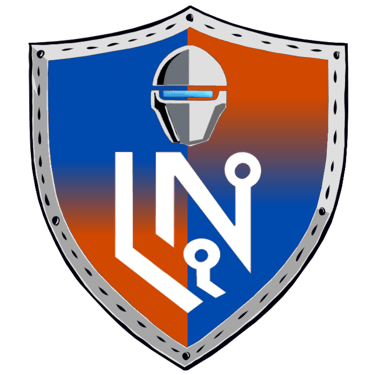SOC Analyst Career Guide: Roles, Teams, and Your Path Forward
Thinking about starting a career in cybersecurity? Here's what you need to know about SOC roles. I just published a comprehensive guide breaking down the Security Operations Center (SOC) landscape for aspiring analysts.
CYBERSECURITY
leadhand
11/18/20253 min read


Your Guide to Starting a Career as a SOC Analyst
So you've completed the Junior Security Analyst training and learned about the SOC L1 analyst role. But what comes next? How does this position fit into the bigger picture of cybersecurity, and what's your path forward? Let's break it down in simple terms.
Understanding the Security Hierarchy
Think of a company's security structure like a pyramid. At the top, you have executives like the CEO focusing on big-picture business goals. Just below them sits the Chief Information Security Officer (CISO), who acts as a bridge between the business side and the technical security teams. The CISO understands what the company needs and builds security departments that actually protect those needs.
The Three Main Security Teams
Most large companies organize their security into three specialized teams:
1. Red Team (The Attackers)
These are the offensive security experts—think ethical hackers and penetration testers. Their job is to find weaknesses before real attackers do.
2. GRC Team (The Rule Keepers)
GRC stands for Governance, Risk, and Compliance. These specialists manage security policies and make sure the company follows regulations like PCI DSS (payment card security standards).
3. Blue Team (The Defenders)
This is where you come in! Blue Team focuses on defensive security, constantly watching for attacks and responding quickly. This is where SOC analysts, security engineers, and incident responders work.
What is a Security Operations Center (SOC)?
The SOC is the heart of defensive security—it's your command center. Think of it as the first line of defense where security professionals monitor alerts and handle attacks 24/7.
A typical SOC includes:
L1 Analysts: Entry-level team members who monitor alerts and escalate complex issues
L2 Analysts: More experienced investigators who handle advanced attacks
Engineers: Technical experts who configure security tools like EDR (Endpoint Detection and Response) or SIEM (Security Information and Event Management)
Manager: The person who oversees the entire SOC operation
You can learn more about SOC structure and operations in this detailed guide.
When Things Get Really Bad: CIRT
Sometimes attacks spiral out of control. That's when you call in the Cyber Incident Response Team (CIRT)—the firefighters of cybersecurity. These teams have deep knowledge of various threats and can handle major breaches without relying solely on automated tools.
Examples of specialized CIRT teams include:
JPCERT: Japan's national CIRT for handling country-wide breaches
Mandiant: A private team responding to global cyber incidents
AWS CIRT: Dedicated to investigating security incidents affecting AWS customers
Specialized Roles for Advanced Careers
As you gain experience, you might specialize in niche areas like:
Digital Forensics Analyst: Investigating disk and memory to uncover hidden threats
Threat Intelligence Analyst: Gathering and analyzing data about emerging threat groups
AppSec Engineer: Securing software throughout the development process
AI Researcher: Studying AI-powered threats and defenses
Your Career Path as a SOC L1 Analyst
Starting as an L1 analyst is an excellent way to build broad cybersecurity knowledge and discover which specialized roles interest you. Here's your roadmap:
Build Core SOC Skills: Practice fundamentals and consider related areas like red teaming or general IT
Get Certified: Consider the SAL1 certification to validate your knowledge
Gain Experience: Apply for SOC positions and learn the difference between internal SOCs and MSSPs (Managed Security Service Providers)
Advance to Senior Roles: After gaining experience, prepare for L2 analyst or specialized positions
Internal SOC vs. MSSP: What's the Difference?
Not sure which path to choose? Here's a quick comparison:
Internal SOC (Working for a bank, for example):
Calmer work pace with less time pressure
Focus on just a few security tools
Learn from a couple of major incidents per year
Protect one organization's systems
MSSP (Working for a security provider):
Fast-paced with urgent alerts to analyze constantly
Work with 60+ different security tools and platforms
Deal with attacks and breaches every week
Protect multiple client organizations across different industries
Both paths offer valuable experience. Many experts recommend starting with an internal SOC for a gentler learning curve, but MSSPs can accelerate your skill development if you thrive under pressure.
What's Next?
Your first year or two in a SOC role is about gaining real-world experience. During this time, you might discover that engineering work (setting up security tools) appeals to you more than analysis. Or you might find CIRT incident response thrilling. Maybe you'll even want to move into management and lead your own SOC team.
The key is to get hands-on experience and explore different areas within cybersecurity.
Challenge Yourself!
Now it's time to test your knowledge. In the final challenge, you'll step into the shoes of a CISO at TrySecureMe, a multinational company. Seven different security incidents are happening simultaneously, and you need to assign the right security professionals to handle each one.
Can you match the right role to each incident? This practical exercise will show you how different security teams work together to protect an organization.
Remember: Understanding these roles isn't just about passing a challenge—it's about knowing where you fit in the cybersecurity world and how you can protect real companies and their users from cyber threats.
Stay secure. Stay informed. Stay ahead
Empowering you to navigate online safely today.
Guide
Alert
© 2025. All rights reserved.
